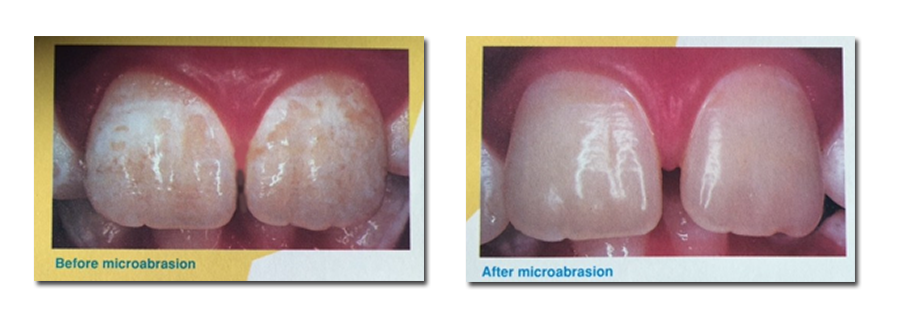
What is Microabrasion?
In microabrasion, dentist carefully rub a compound on the teeth to remove superficial stains and discolorations.
Why are my child’s teeth discolored?
A number of conditions can cause discoloration of permanent teeth. For example, trauma to a baby tooth, an infection around a baby tooth, and high fevers or prolonged chronic illnesses during childhood can cause discolorations. Fluoride can also cause some white or brown discolorations of teeth when a child receives a high dose over a period of time.
Some teeth have a deeper, irreversible stain or discoloration, the result of trauma, root canal therapy or medications such as tetracycline. These deep stains are not improved with microabrasion.
Will microabrasion work on my child?
The success of microabrasion depends on a number of factors, especially the type of extent of the discoloration. So, it is difficult to predict when microabrasion will remove a discoloration completely from a tooth. Pediatric dentists have learned that brown or dark stains are removed readily in most cases. White discolorations are often improved; sometimes they are totally eliminated. Other times, white discolorations are very persistent and not removed completely with microabrasion. Some teeth have a “speckled” appearance, showing a lot of white spots all over the tooth. These teeth may be improved with microabrasion. By removing the bright white spots, the teeth will have a slightly darker, but more even color.
What if microabrasion doesn’t work?
Microabrasion is a safe, minimal treatment of discolored teeth. Attempting microabrasion does not eliminate any of the alternatives for treatment. Other treatment for discolored teeth are plastic or porcelain veneers or porcelain crowns. These options are less affordable and more extensive than microabrasion because they require some tooth preparation. So, it’s wise to consider microabrasion as your first choice of treatment for discolored teeth.
